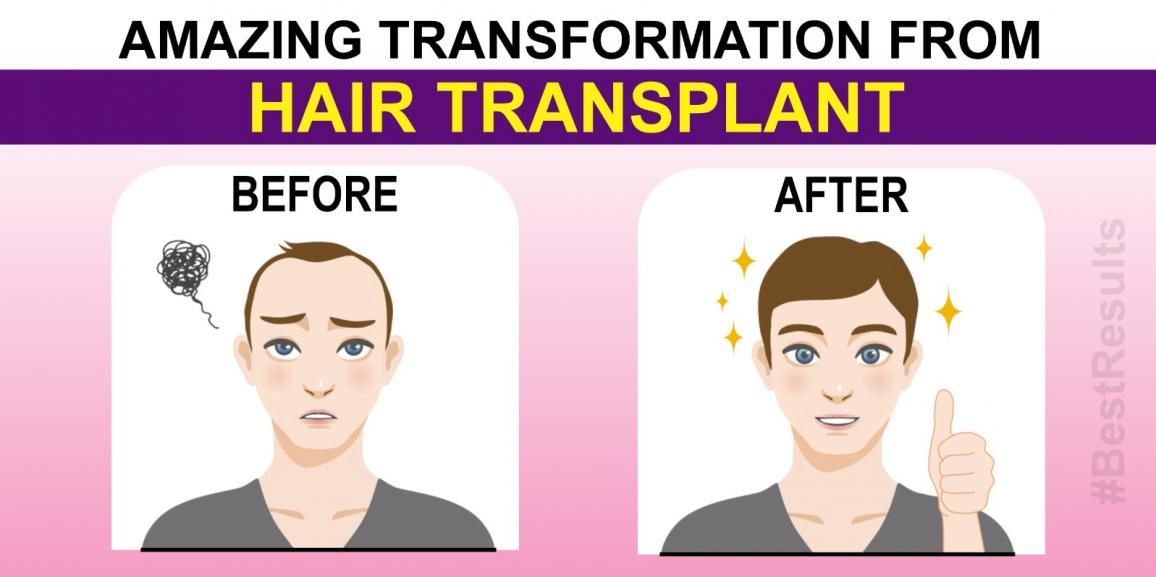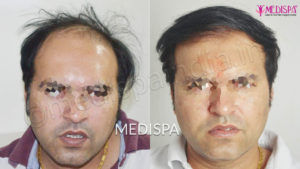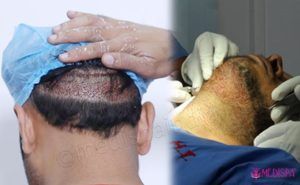
Hair loss has emerged as a global issue due to various environmental changes occurring worldwide, leading to an increased prevalence of early hair loss. This phenomenon is particularly affecting young individuals, impacting their mental well-being.
The procedure of hair transplant is considered a life-saving solution for those suffering from hair loss, as it offers a permanent solution to baldness. Not only Indians, but also individuals from foreign countries who are experiencing hair loss, are opting for hair transplant in Jaipur. This can be attributed to the exceptional skills and reputation of the hair transplant surgeon, who is recognized as one of the world’s top experts in this field.
The hair transplant cost in Jaipur is significantly more affordable compared to Western countries, making it accessible to people from all over the world. This affordability factor has attracted individuals seeking the best hair transplant results at a reasonable cost.
Hair transplant
Hair transplantation is a minimally invasive cosmetic surgery that entails extracting hair grafts from areas with permanent roots and implanting them into bald areas. The donor areas selected are resistant to DHT (dihydrotestosterone), a hormone responsible for genetic hair loss, as they lack receptors for androgenic hormones. While anyone can opt for a hair transplant, thorough scrutiny is conducted to assess the feasibility of the procedure. Once the candidacy is confirmed, patients can expect favorable outcomes from this procedure, making it a worthwhile choice.
Hair transplant procedure
It is a highly precise and technique-sensitive procedure that must be carried out by skilled surgeons. The hair transplant surgery involves the following steps:
- The hair is trimmed according to the chosen procedure and technique. The FUT technique requires minimal shaving only from the strip harvesting area, while the FUE technique requires complete shaving.
- Once trimmed, the donor area and recipient area are locally anesthetized.
- The grafts are harvested based on the chosen technique. In the FUT technique, a thin strip is harvested and then dissected to retrieve individual grafts. After the strip is harvested, an advanced technique called trichophytic closure is used to close the donor area, resulting in an almost invisible scar.
- The recipient site is prepared through a process called slitting. This step is crucial and should be performed carefully with proper planning to ensure aesthetic outcomes.
- The harvested hair grafts are then planted in the prepared slits at the recipient site.
- After the hair transplant procedure, small circular clots form around the newly transplanted hairs. These clots are washed off by the professional team at the clinic on the second day of the procedure.
- The patient is provided with a list of instructions to be strictly followed as explained by the hair transplant surgeon.
Hair transplant cost
The cost of hair transplant or any other cosmetic procedure has always been a determining factor, considering that these procedures are elective. However, when you take into account the sensitivity of the procedure and the positive outcomes it brings, the cost of hair transplant is actually quite affordable. In comparison, you would end up spending more money on temporary aids throughout your life, as these aids require constant replacements and maintenance. In India, the average cost of hair transplant is significantly lower than in western countries. The cost in India can range from 60,000 to 400,000 INR, depending on various factors that are carefully examined during the initial consultation. Most clinics adopt a per graft model to calculate the cost, which typically varies from 30 to 130 INR. Therefore, if you are hesitant about undergoing a hair transplant due to its cost, it is important to consider the value of the procedure as a one-time investment in your happiness and confidence. With a hair transplant, you can once again proudly display hair in areas that were previously bald.
Hair transplant: Complications
The hair transplant procedure is a minimally invasive treatment with minimal short-term complications that do not result in any morbidity. Patients can easily resume their routine work the day after the procedure. However, there are some complications that may occur after a hair transplant:
- Swelling: Swelling is a common complication that typically lasts for 5-7 days after the procedure. It usually affects the forehead but can sometimes extend to the eyelids. To reduce swelling, patients are advised to sleep with their head elevated at a 45° angle. Additionally, wearing prescribed headbands for 4 hours a day for 2 days can also help.
- Itching: Itching is another common complication that can be easily managed and usually subsides within a week. Regular washing and the application of prescribed lotions by your hair transplant surgeon can help control the itching.
- Numbness: Patients may experience numbness for a few weeks after the hair transplant procedure, which typically resolves on its own. However, if numbness persists, it is important to consult your hair transplant surgeon for further examination
- Discomfort: A mild discomfort is a typical occurrence after undergoing a hair transplant procedure. Generally, this discomfort can be effectively managed without the need for any medications. However, if it becomes unbearable, it is always advisable to consult your hair transplant surgeon before attempting any self-treatment for pain relief.
- Scalp blemishes: These blemishes may appear a few weeks after undergoing a hair transplant, which may initially seem like a complication. However, they are actually a positive indication of hair growth. As these blemishes burst, the hair shafts may fall out, but this is followed by the emergence of new hair shafts from the transplanted hair follicles. These new hair shafts become visible approximately three months after the hair transplant procedure.





